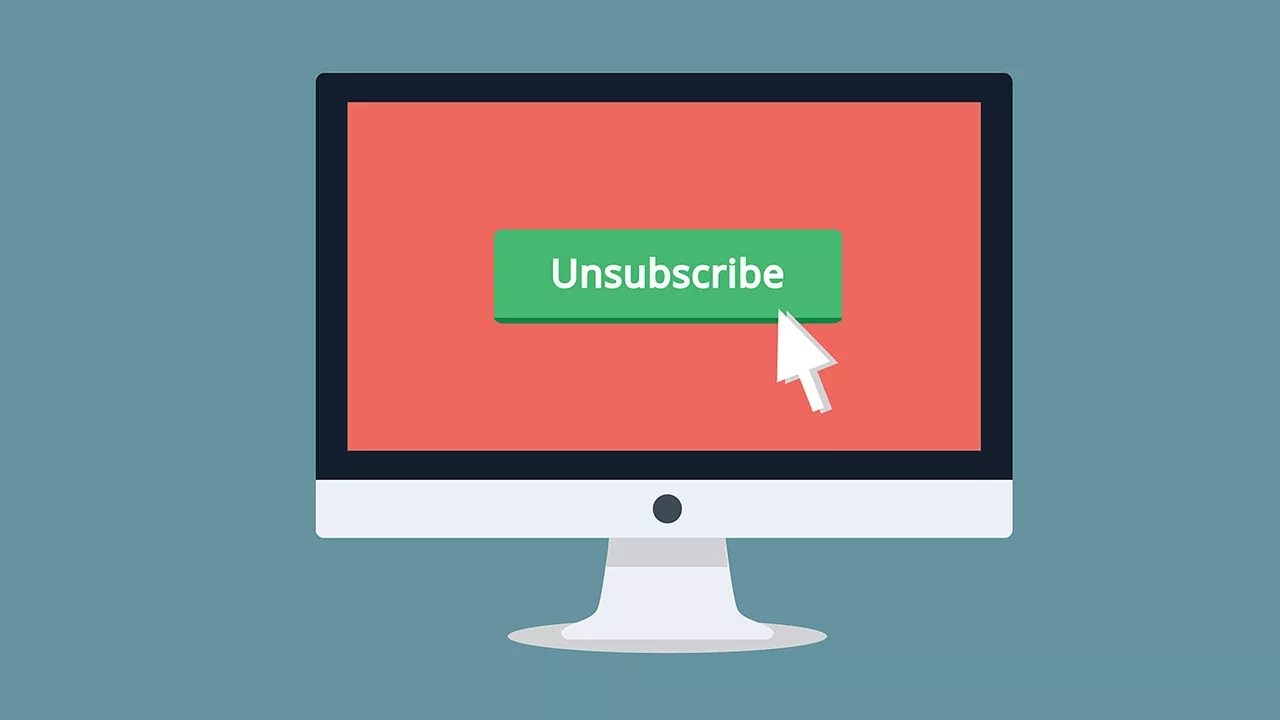
Email marketing is a powerful way to build relationships with your customers, but it’s not without its problems. One of the most common complaints about email marketing is the unsubscribe rate. In this post, we’ll explore the causes of high unsubscribe rates, and how you can keep yours low.
As an email marketing agency who has spent almost two decades in email marketing we thought we were ideally placed to share some of our experiences regarding how to keep your unsubscribe rate low, so we hope you find this useful.
Know who you’re sending the email to
Knowing who you’re sending your email to is the most important thing when it comes to keeping your unsubscribe rate low. By knowing your customers you have refine your messages and content to enhance the recipients experience.
- Know your audience. What are their interests? Where do they live? Do they have children/grandchildren/pets? How old are they, and what makes them tick?
- Know their demographics. Are there any geographic areas that could benefit from your product or service more than others? What about gender and race—are those things relevant to what you’re offering in any way? If so, how should this information be used in marketing decisions (if at all)?
- Know their buying habits. How often do they purchase from companies like yours—and why do they buy from them instead of someone else? Are there certain products or services that could benefit them more than others because of their buying habits (e.g., a camera lens might be better suited for someone who takes pictures every day rather than an amateur photographer).
- Know their buying preferences; find out why someone would prefer one brand over another based on price point vs quality vs features (and then use this information when making decisions about which vendors will supply products/services).
Ultimately, the more you know, the more relevant you can make your email marketing.
Send from a recognizable sender name
The first step to making sure your subscribers stay subscribed is to make it clear who you are. While this might seem obvious, many marketers will use generic words like “marketing” or “info” instead of their own company name. These names don’t tell people anything about who you are and what kind of content they can expect from your email campaigns.
If your company has a recognizable brand name, use that to create a sender name for all emails sent through that domain. For example, if you work for IKEA and send an email campaign about furniture sales, the best sender name would be “@IKEA,” where “@” is the symbol used in email addresses (it stands for at). This lets people know what type of information they’ll receive before opening up an email from you!
When selecting a sender name, keep these things in mind: – Make sure it’s short and easy to remember – Don’t include any spaces or special characters unless necessary (e.g., two words separated by commas) – Avoid using any punctuation marks other than hyphens/underscores – Don’t add numbers into any part of the address
Set expectations in your newsletters
One of the best ways to keep your email marketing unsubscribe rate low is by setting clear expectations for what you are going to send in advance. If you’re sending a weekly newsletter, mention that it will be weekly and give subscribers an option to opt out if they don’t want it. If you’re sending a monthly newsletter, let people know that too! This way, when you send something unexpected (like a notification about an event), they won’t feel like their inbox has been violated.
Setting expectations can also help prevent the other common cause of high unsubscribe rates: too many emails from one sender in one day or week. You wouldn’t walk up to someone on the street and start talking at them without knowing what they wanted to hear, so why would you do this over email? A good way to avoid this is by informing readers how often they’ll be receiving emails from your company as part of each new contact form submission or newsletter signup form. The more information upfront—and the easier it is for someone who wants less communication with your business—the better chance there is that they’ll keep subscribing even after receiving their first few messages!
Create a sense of urgency with each message
If you want to keep your email marketing campaign from being a total dud, use words like “limited time offer,” “last chance,” or “available for a limited time.” These phrases give a sense of urgency to the reader. They’ll see that if they don’t act quickly, they might miss out on something special. You can also use a time-sensitive offer or countdown timer as another way to emphasize how important it is that your subscribers take action right now!
Use persuasive subject lines
One of the best ways to keep your unsubscribe rate low is by using persuasive subject lines. The more relevant and personalized a subject line is, the more likely it is that subscribers will open your emails.
For example, if you’re sending an email about a new product launch, use “New Product Launch” as your subject line. If you’re sending an email announcing a webinar or other event, use “Webinar Registration Now Open!” as your subject line.
You can also add personalization using customer data and behavioral information.
Keep the content short and sweet
Short emails can still pack a punch. The average email is well over 100 characters long, so try to keep it under that—and definitely under 200. It may seem counterintuitive, but using fewer words will actually make your message more effective at conveying its point and getting your point across without overwhelming readers with information overload or giving them too much time to think about their decision before hitting the unsubscribe button.
Use bullet points instead of paragraphs where possible—they keep things organised and easy to skim through quickly without having to read through an entire paragraph (which means users don’t have time for doubts about whether or not they really want what you’re offering).
Personalise the email newsletter where possible
Personalization is a big part of what makes email so effective for marketing. If you can make your emails feel more like they are being sent to the recipient and not just any random person who signed up for the newsletter, then chances are higher that they will be read. So how do you personalize an email?
The most obvious thing to do is use the customer’s name whenever possible. For example:
- Use their first name in subject lines (e.g., “Hi Tina!”). This helps ensure that your emails don’t get lost in other people’s inboxes.
- Use their name in the body of the email (e.g., “Thank you again, Tina”). This helps build trust and familiarity between you and your customers over time as well as give them a sense that they know each other personally rather than just having mutual business interests or affiliations with each other’s company or organization
Test variations before sending to all subscribers
Don’t send your messages to all subscribers at once. It’s a good idea to test different versions of your emails before sending them out. Here are some ways you can do this:
- Test subject lines. You can try changing the subject line, or adding more details or benefits in the copy of your email.
- Test calls-to-action (CTAs). The CTA is the thing that prompts someone who is reading an email to click on it and take action—like download an ebook or sign up for an event. Your CTAs should be compelling enough for people who open your emails again, but also clear enough that new subscribers can understand what each option means without having to refer back to previous messages from you or doing any research outside of opening up this single email message from you.
- Test content and format variations within each message type when possible — especially if there are multiple variations on one topic like webinars vs seminars vs workshops; these could have different appeal depending upon who the intended audience is so it’s important not only for marketers but also anyone responsible for planning events related specifically towards meeting room bookings etcetera will be able to forecast demand months ahead with confidence thanks partly due being able to predict what types of messaging works best depending on event type e.,g., webinar vs seminar vs workshop etcetera!
By introducing a robust testing programme you are able to make continuous improvements to your email marketing campaign. Better emails should result in more people wanting to receive them and reduce the number of people wanting to unsubscribe!
Stay on topic!
If you send emails that relate to your business, you’re more likely to engage customers. Don’t send emails that are unrelated to your business, like newsletters about what’s going on in the world, or other random and irrelevant content (like a colleague’s recent vacation). Instead, focus on giving people what they want from you: useful information related to the products and services that you provide. This helps keep your unsubscribe rate low because it gives people exactly what they came for—in other words, it’s providing them with some kind of value.
If you follow these guidelines, you will hopefully see fewer unsubscribes
If you follow these guidelines, you will hopefully see fewer unsubscribes.
- Ensure that you are sending to the right people: You want to make sure that your emails are being sent only to people who actually purchased from you or opted in for updates from you. Never send your list an email if they haven’t given explicit permission to receive it.
- Use a personalized name in the sender field: Your subscribers may be annoyed by seeing their own name listed as the sender on every single email they receive. Instead, use their first name and last initial (e.g., “John Smith” instead of “John S”) so that each message feels more personal and less like spam coming straight out of cyberspace.
- Make sure content is relevant: The content of every email should relate directly back to what they signed up for when they gave permission for marketing communications from your brand – nothing else! If someone wanted coupons but gets updates about new products instead, this is likely going to annoy them enough that they opt out altogether or at least stop opening future emails from us (and who wants either one?).
Conclusion
We hope that you found this guide helpful and informative. If you have any questions, feel free to reach out to us!

comments